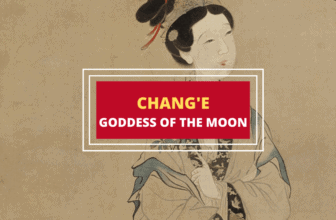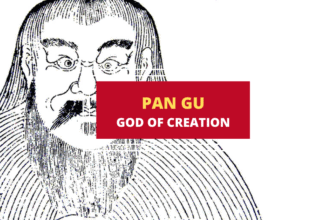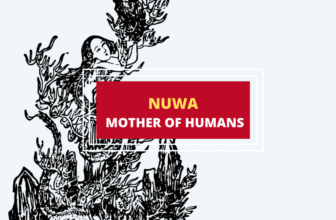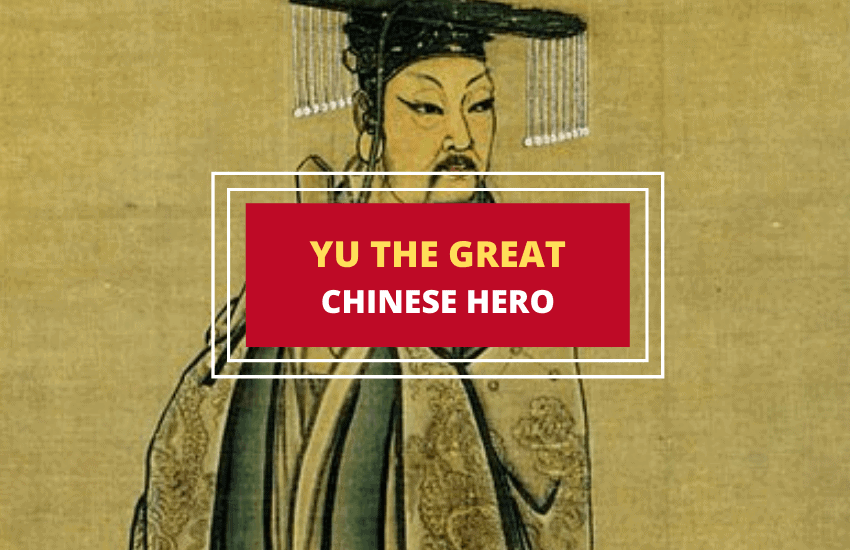
Table of Contents
An important figure in both Chinese mythology and history, Yu the Great has a reputation of being a wise and virtuous ruler. Ancient China was a land where mortals and gods lived together, which created a divinely inspired culture. Was Emperor Yu a historic person or just a mythical figure?
Who Is Yu the Great?
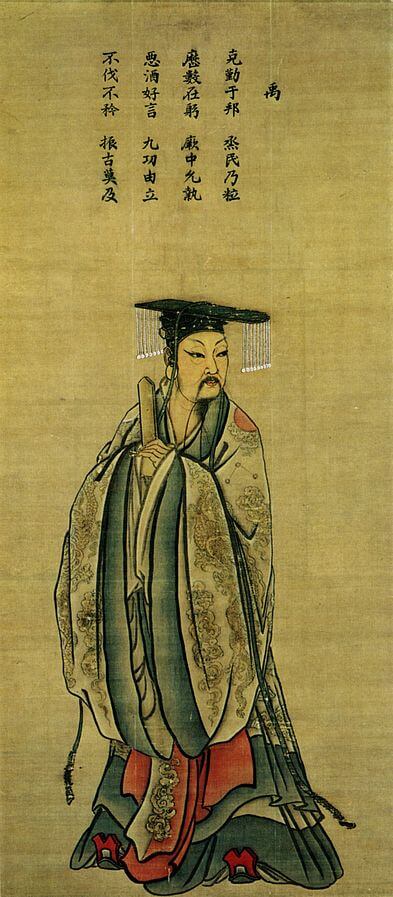
Also known as Da Yu, Yu the Great founded the Xia dynasty, the China’s oldest dynasty around 2070 to 1600 BCE. In Chinese mythology, he’s known as the Tamer of the Flood who became famous by controlling the waters that covered the territories of the empire. Eventually, he was noted by Confucians as a role model for Han emperors.
Yu’s reign predates the oldest-known written records in China, the Oracle Bones of the Shang dynasty, by nearly a thousand years. His name wasn’t inscribed on artifacts discovered from his time, nor was it inscribed on the later oracle bones. The lack of archeological evidence has led to some controversy about his existence, and most historians consider him to be purely a legendary figure.
Myths about Yu the Great
In ancient China, the leaders were chosen by ability. Yu the Great had made a name for himself by controlling the flooding of the Yellow River, so he eventually became the emperor of the Xia dynasty. From his reign, the China’s dynastic cycle started, where the kingdom was passed on to a relative, usually from father to son.
1. Great Yu Who Controlled the Waters
In the Chinese legend, all rivers between the Yellow River and Yangtze had risen from their banks and caused massive floods that persisted for decades. Survivors even left their homes to seek shelter in the high mountains. Yu’s father, Gun, first attempted to stop the flooding with dykes and walls but failed.
Emperor Shun commanded Yu to continue his father’s projects. The feat took years, but Yu was determined to learn from his father’s mistakes with the floods. In order to drain the stream into the seas, he built a system of canals, which divided the rivers and lessened their uncontrollable force.
In some versions of the legend, Yu had two fantastic helpers, the Black Turtle and the Yellow Dragon. While the dragon dragged its tail through the earth to make channels, the turtle pushed huge heaps of mud into place.
In other stories, Yu met Fu Xi, a deity who gave him the Jade Tablets, which helped him to level the rivers. The river gods also provided him with maps of rivers, mountains and creeks that helped in channeling the waters.
Since Yu tamed the floods, he became a legend, and Emperor Shun decided to choose him to succeed the throne rather than his own son. Later, he was called Da Yu or Yu the Great, and he established the first hereditary empire, the Xia dynasty.
2. The Extraordinary Birth of Yu
Yu’s father, Gun, was first assigned by Emperor Yao to control flooding, but failed in his attempt. He was executed by Yao’s successor, Emperor Shun. According to some stories, Yu was born from the belly of this father, who had a miraculously preserved body after three years of death.
Some stories say that Gun was killed by the fire god Zhurong, and his son Yu was born out of his corpse as a dragon and ascended to heaven. Due to this, some regard Yu as a demi-god or an ancestor deity, especially during the time where natural disasters and floods were seen as the work of supernatural entities or angry gods.
The 2nd-century Chinese text Huainanzi even states that Yu was born from a stone, associating him with the ancient belief about the fertile, creative power of stone. By the 3rd century, Yu’s mother was said to be impregnated by swallowing a divine pearl and magic seeds, and Yu was born in a place called the stone knob, as described on the Diwang Shiji or the Genealogical Annals of the Emperors and Kings.
Symbolisms and Symbols of Yu the Great
When Yu the Great became emperor, he divided the country into nine provinces, and appointed the most capable individuals to oversee each province. Then, he collected a bronze in tribute from each one and designed nine cauldrons to represent the nine provinces and his authority over them.
Here are some of the meanings of the Nine Cauldrons:
- Power and Sovereignty – The nine cauldrons were the symbol of Yu’s legitimate dynastic rule. They were passed dynasty to dynasty, gauging the rise or decline of sovereign power. They were also seen as symbols of authority given to the emperor by the heaven.
- Virtue and Morality – The moral worth of cauldrons was conveyed metaphorically through their weight. It’s said that they were too heavy to move when an upright ruler sat on the throne. However, they became lightweight when the ruling house was evil and corrupt. If there was a more capable ruler chosen by heaven, he could even steal them to show that he’s the legitimate emperor.
- Trustworthiness and Loyalty – In modern times, the Chinese phrase that words “have the weight of nine cauldrons,” means that the person speaking is trustworthy and would never break their promises.
Yu the Great and Xia Dynasty in History
Some stories once viewed as myth and folklore may be rooted in real events, as geologists have found evidence that may support Emperor Yu’s flood legend, along with the founding of the semi-mythical Xia dynasty.
Archeological Evidence of the Flood
In 2007, researchers noticed evidence for the famous flood after examining the Jishi Gorge along the Yellow River. The evidence suggests that the flood was devastating as the legend claims. The scientific evidence can be dated to 1920 BCE—a period that coincides with the beginning of the Bronze Age and the start of the Erlitou culture in the Yellow River valley—which many associate with the Xia dynasty.
Many speculate that if the historical disaster of the flood really happened, then the founding of the Xia dynasty also occurred within a few decades. Skeletons have been found at the cave-dwellings of Lajia, suggesting that they were the victims of a killer earthquake, which caused a landslide and catastrophic flood along the banks of the Yellow River.
In Ancient Chinese Writings
Yu’s name wasn’t inscribed on any artifacts of his time, and the flood story only survived as oral history for a millennium. His name first appears in an inscription on a vessel dating to the Zhou dynasty. His name was also mentioned in many ancient books of the Han dynasty, such as the Shangshu, also called Shujing or the Classic of History, which is a compilation of documentary records of ancient China.
The Xia dynasty is also described in the ancient Bamboo Annals of the late 3rd century BCE, as well as on the Shiji or the Historical Records by Sima Qian, over a millennium after the end of the dynasty. The latter narrates the origin and history of Xia, as well as the battles between clans before the dynasty was established.
The Temple of Yu
Yu the Great has been highly honored by the Chinese people, and several statues and temples have been built to honor him. After his death, Yu’s son buried his father on the mountain and offered sacrifices at his grave. The mountain itself was renamed Guiji Shan, and the tradition of imperial sacrifices for him began. Emperors all down the dynasties personally travelled to the mountain to pay their respects.
During the Song dynasty, the worship of Yu became a regular ceremony. In the Ming and Qing dynasties, sacrificial prayers and texts were offered, and officials from the court were dispatched as emissaries to the temple. Poems, couplets and essays were even composed in praise of him. Later, the sacrifices for Yu were also continued by Republican leaders.
At the present day, the temple of Yu is located at the modern-day Shaoxing in Zhejiang province. There are also temples and shrines found across China, in various parts of Shandong, Henan and Sichuan. In Taoism and Chinese folk religions, he’s regarded as a water deity, and the head of the Five Kings of the Water Immortals, worshipped in temples and shrines.
Importance of Yu the Great in Modern Culture
Nowadays, Yu the Great remains a role model for rulers regarding proper governance. He’s also remembered as a dedicated official committed to his duties. The worship of Yu is thought to have been sustained by popular religion, while officials regulate the local beliefs.
The Da Yu Sacrifice in Shaoxing
In 2007, the ritual ceremony for Yu the Great in Shaoxing, Zhejiang province was elevated to national status. The leaders of the government, from the central to provincial and municipal governments, attend the gathering. It’s just one of the recent moves taken to honor the legendary ruler, reviving the ancient custom of sacrifices to Da Yu in the first lunar month. The birthday of Yu falls on the 6th day of the 6th lunar month and is celebrated yearly with various local activities.
In Popular Culture
Yu the Great remains a legendary character in several mythologies and novels. In the graphic novel Yu the Great: Conquering the Flood, Yu is depicted as a hero born from a golden dragon and descended from the gods.
In Brief
Regardless of the historical validity of his existence, Yu the Great is regarded as a virtuous ruler of the Xia dynasty. In ancient China, the Yellow River was so strong and killed thousands of people, and he was remembered for his remarkable deeds of conquering the flood. Whether he’s a historic person or simply a mythical character, he remains one of the most important figures in Chinese mythology.




